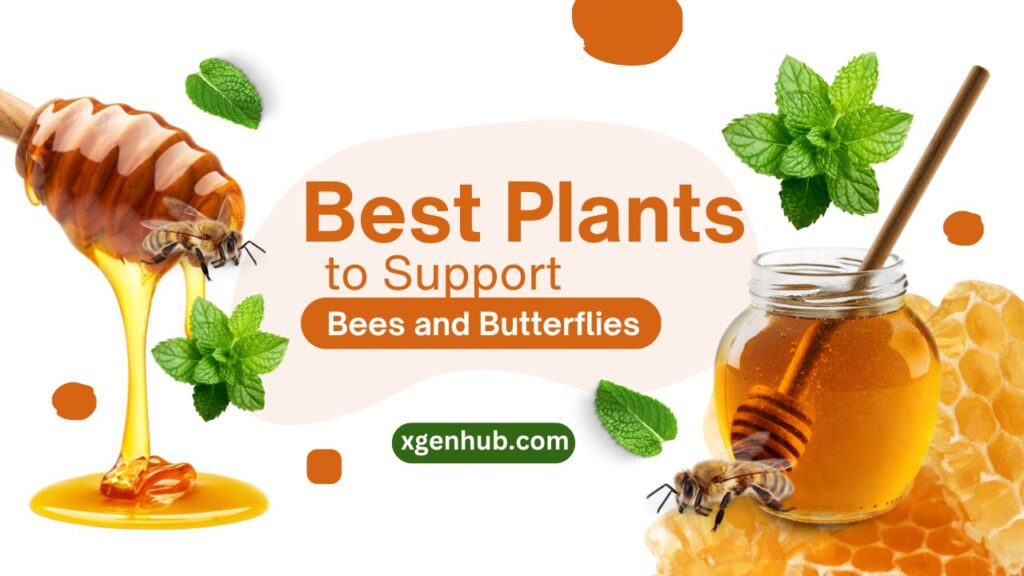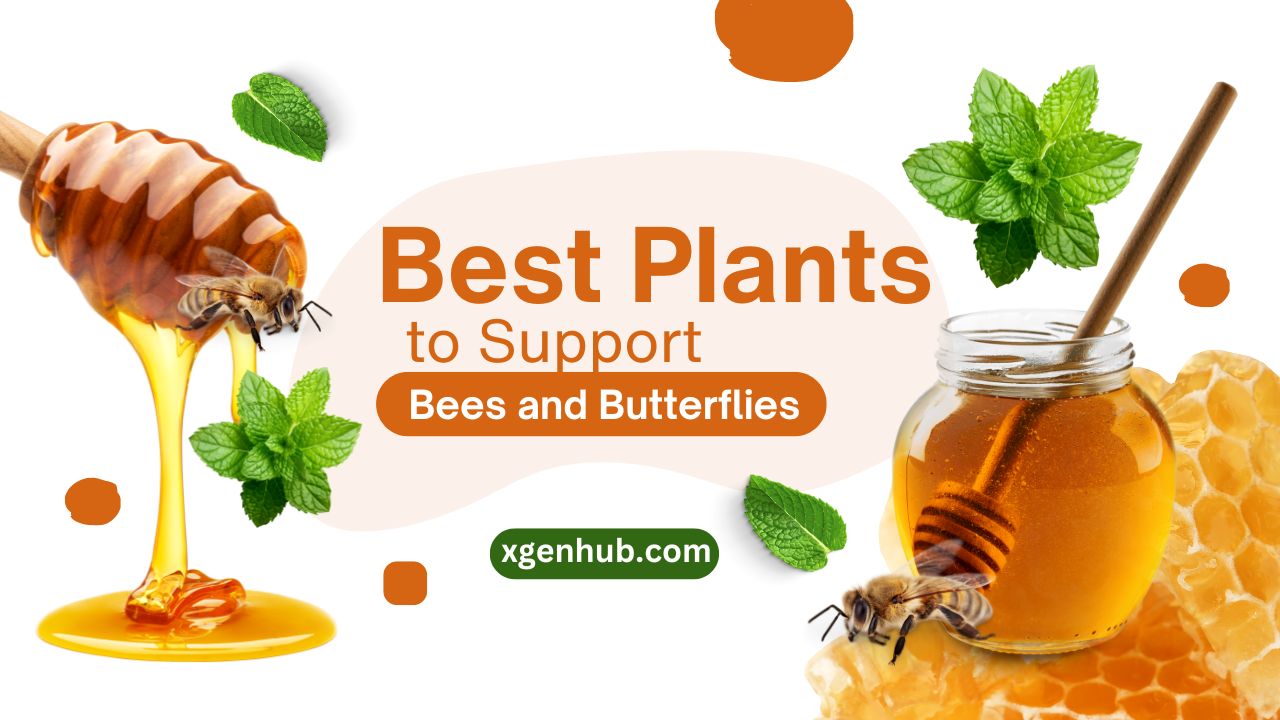In recent years, the plight of bees and butterflies has captured the attention of conservationists, gardeners, and nature lovers alike. These pollinators play a crucial role in maintaining healthy ecosystems and supporting food production. One of the most effective ways to support these important creatures is by incorporating the best plants to support bees and butterflies into your garden. This detailed guide will explore various plant species, their benefits, and how you can create an inviting habitat for these vital pollinators.
Unlock Your Online Success! Watch Our Exclusive Video for FREE and Start Earning Today!

Why Bees and Butterflies Matter
Bees and butterflies are essential for pollination, which is the process of transferring pollen from one flower to another, allowing plants to reproduce. According to the Food and Agriculture Organization (FAO), over 75% of the world’s flowering plants depend on animal pollinators, making these insects indispensable for biodiversity and food security. Bees, in particular, are responsible for pollinating approximately 35% of the global food supply, including fruits, vegetables, and nuts.
Unlock Your Online Success! Watch Our Exclusive Video for FREE and Start Earning Today!
The Decline of Pollinator Populations
Unfortunately, bees and butterflies face numerous threats, including habitat loss, pesticide exposure, climate change, and disease. The decline of these pollinator populations is alarming, prompting a collective effort to create pollinator-friendly environments. By planting the best plants to support bees and butterflies, you can contribute to their survival and promote a healthier ecosystem.
Choosing the Right Plants
When selecting plants to support bees and butterflies, consider native species. Native plants are adapted to local climates and soil types, making them more resilient and beneficial for local wildlife. Here are some of the best plants to consider:
1. Milkweed (Asclepias spp.)
Milkweed is the primary host plant for monarch butterflies. These plants not only provide nectar for adult butterflies but also serve as a crucial habitat for caterpillars. There are various species of milkweed, including Common Milkweed (Asclepias syriaca) and Swamp Milkweed (Asclepias incarnata). Planting milkweed in your garden ensures a sustainable environment for monarchs and other pollinators.
2. Coneflower (Echinacea spp.)
Coneflowers are vibrant, drought-tolerant perennials that bloom from summer to fall. Their large, daisy-like flowers attract a variety of pollinators, including bees and butterflies. Echinacea purpurea (Purple Coneflower) is particularly popular for its medicinal properties and ability to attract wildlife.
3. Lavender (Lavandula spp.)
Lavender is not only a beautiful addition to any garden but also a magnet for bees and butterflies. This aromatic herb thrives in sunny, well-drained areas and produces long-lasting blooms in shades of purple, blue, and white. Lavender’s essential oils are known to have calming effects on humans, making it a win-win for both gardeners and pollinators.
Unlock Your Online Success! Watch Our Exclusive Video for FREE and Start Earning Today!
4. Black-eyed Susan (Rudbeckia hirta)
Black-eyed Susans are hardy perennial flowers that bloom in late summer and fall. Their bright yellow petals and dark centers attract various pollinators. These plants are drought-resistant and easy to grow, making them an excellent choice for both novice and experienced gardeners.
5. Bee Balm (Monarda spp.)
Bee Balm, or Monarda, is a must-have for any pollinator garden. This plant produces clusters of colorful blooms that are rich in nectar. It is especially attractive to bees, butterflies, and hummingbirds. Bee Balm also has medicinal properties and can be used to make herbal teas.
6. Goldenrod (Solidago spp.)
Goldenrod is often misunderstood and wrongly blamed for allergies. In reality, this native plant provides abundant nectar for bees and butterflies, especially in late summer and fall when many other flowers have faded. Goldenrod is also drought-tolerant and can thrive in various soil conditions.
7. Asters (Aster spp.)
Asters are late-blooming perennials that are crucial for pollinators preparing for winter. They provide food sources for bees and butterflies when many other plants are no longer flowering. With numerous species and varieties, asters can add vibrant colors to your garden.
Creating a Pollinator-Friendly Habitat
To maximize the effectiveness of the best plants to support bees and butterflies, consider these tips for creating a welcoming habitat:
Unlock Your Online Success! Watch Our Exclusive Video for FREE and Start Earning Today!
1. Diverse Plant Selection
Plant a variety of flowering plants that bloom at different times throughout the growing season. This diversity ensures that pollinators have access to food sources from spring through fall.
2. Use Native Plants
Incorporate native plants into your garden design. Native plants are adapted to the local climate and soil, requiring less maintenance and providing optimal habitat for local pollinators.
3. Avoid Pesticides
Pesticides pose significant risks to bees and butterflies. Opt for organic gardening methods and natural pest control strategies to protect these vital insects. If you must use chemicals, choose less harmful options and apply them at times when pollinators are less active.
4. Provide Shelter
Create a diverse environment that includes areas for shelter. Consider adding native grasses, shrubs, and small trees to provide hiding spots and nesting sites for bees and butterflies.
5. Water Sources
Pollinators need water to survive. Provide shallow water sources, such as birdbaths or small ponds, with stones or pebbles for insects to land on safely.
6. Avoid Monoculture
Monoculture gardens, which consist of a single plant species, do not support the diverse needs of pollinators. Instead, create mixed plantings to provide a variety of food sources.
7. Community Involvement
Engage with your local community to raise awareness about the importance of pollinators. Participate in local conservation efforts or plant sales that focus on pollinator-friendly plants.
Conclusion
Supporting bees and butterflies is a crucial step toward fostering a healthy ecosystem and ensuring the survival of these vital pollinators. By incorporating the best plants to support bees and butterflies into your garden, you can create a thriving habitat that benefits both the environment and your gardening efforts.
Unlock Your Online Success! Watch Our Exclusive Video for FREE and Start Earning Today!
In summary, plants such as Milkweed, Coneflower, Lavender, Black-eyed Susan, Bee Balm, Goldenrod, and Asters are excellent choices for attracting these essential insects. Remember to prioritize diversity, use native species, avoid pesticides, and provide water and shelter. By taking these actions, you can make a significant impact on the health of bee and butterfly populations while enhancing the beauty and productivity of your garden.
